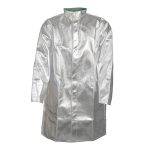Your list is empty, add products to the list to send a request
What are the principles of a fire fighting system?

01
Mar
Comprehensive fire safety and protection measures are critical for any building or facility. When flames inevitably spark, mitigating risks and damage requires adherence to core principles both proactively and reactively. Here, we’ll explore essential concepts facility managers and business owners should understand about developing reliable fire fighting systems.
Partner with Established Industry Leaders
While specialized knowledge is required, facility staff can’t be expected to be fire protection experts. That’s why partnering with established nationwide industry leaders like those featured on FireSupplies ensures access to top-tier experience and capabilities.
Reputable fire protection companies offer well-trained technicians along with high-quality equipment and components. Working together assess vulnerabilities, establish emergency action plans, install and inspect systems, and handle repairs.
This expertise empowers businesses to meet codes and compliance regulations too. Relying on experienced providers paves the way for building truly robust fire safety frameworks tailored to your unique needs and risks.
Emergency evacuation procedures
Even with exceptional systems in place, fires can erupt quickly and threaten occupant safety. That’s why detailed emergency evacuation procedures are non-negotiable. Identify exit routes in each area while designating a centralized meeting location outdoors.
Appoint evacuation wardens to help guide people out efficiently. Post visible floorplans and conduct regular drills so everyone understands exactly what to do. Life safety must remain the top priority if flames break out unexpectedly. Failing to prepare staff through training and run-throughs leaves them prone to reacting poorly in high-stress situations.
Emphasize Proactive Fire Prevention First
According to the NFPA, around 1.5 million fires are reported per year in the United States, causing thousands of civilian deaths and direct property damage totaling an estimated $18 billion. However, most incidents can be prevented altogether through proactive risk reduction initiatives.
This begins by eliminating ignition sources wherever possible by enforcing no-smoking policies while limiting combustibles. Handle chemicals, gases, and hazardous materials cautiously to avoid leaks. Use spark shields when welding or cutting metal. Don’t overload electrical outlets, which generate heat that could ignite materials.
Making fire prevention the primary focus minimizes the likelihood of serious emergencies that need evacuation and suppression activation.
Fire triangle
For blazes to emerge and spread, three connected elements must be present:
- Heat – sufficient temperatures ignite fuel
- Fuel – flammable gases, liquids or materials
- Oxygen – to sustain burning
Eliminating any side of the fire triangle keeps unwanted combustion at bay. Interruption of the fire cycle occurs when extinguishers cool temperatures, smother oxygen access, or chemically inhibit molecules after fires have started.
Training staff to respect fire fundamentals promotes both prevention and quicker response. Always keep the flammability basics top of mind.
Install Appropriate Fire Suppression Systems
Having the right suppression equipment is crucial for fire safety. It should be tailored to your building and its occupants. FireSupplies experts determine ideal solutions by choosing from:
- Fire Sprinkler Systems. Networks of water pipes and sprinkler heads activated by heat to douse flames. Require water supply lines and inspection.
- Fire Extinguishers. Handheld portable canisters are discharging compounds to extinguish small fires. Different chemical agents combat various fuels. Popular options include water, foam, CO2, wet chemicals, dry chemicals, and clean agents. Classify contents by letter types.
- Fire Hoses. Flexible and durable hoses manually attached to standpipes and hydrants to channel water streams onto fires from a distance. Tradeoff mobility with limited reach.
- Fire Hydrants. Interface between water mains below ground and fire hoses above ground. Strategically locate hydrants around properties for easy firefighter access.
Each system carries advantages and disadvantages for suppression capabilities, functionality, maintenance, and costs. Evaluate all when designing well-rounded fire defense infrastructure with the right tools for each likely emergency scenario.
Recognize fire hazards and risks
Complacency opens the door to accidents and overlooked vulnerabilities that enable fires to start and spread farther than they should. Maintain ongoing proactive assessments to identify possible deficiencies or gaps needing improvement.
Perform internal audits with fire protection specialists to inspect facilities for potential hazards. Check for uncontained ignition sources. Ensure exits/escapes are not blocked. Test smoke detectors. Keep flammables in the right place. Make sure ventilation systems and sprinklers are working.
Logging every issue and then prioritizing solutions demonstrates continuous due diligence. Don’t give small problems today a chance to become tomorrow’s major disaster through ongoing attentiveness.
Conclusion
Foundational principles support robust systems for safe business operations and preparedness for emergencies. With the above principles, FireSupplies by Fire Safety product Near You reduces the risk for its customers. Avoid taking shortcuts or overlooking potential issues resulting in significant consequences later on. Contact FireSupplies now for thorough facility assessments by certified technicians to prevent potential disasters.
Understand the Core Principles of Fire Fighting
An effective fire fighting system requires multiple integrated components working together. This includes sufficient water supply, durable and flexible hoses, high-pressure pumps, foam concentrates, and trained personnel. Knowing these key principles allows fire departments to optimize equipment and strategy.









































